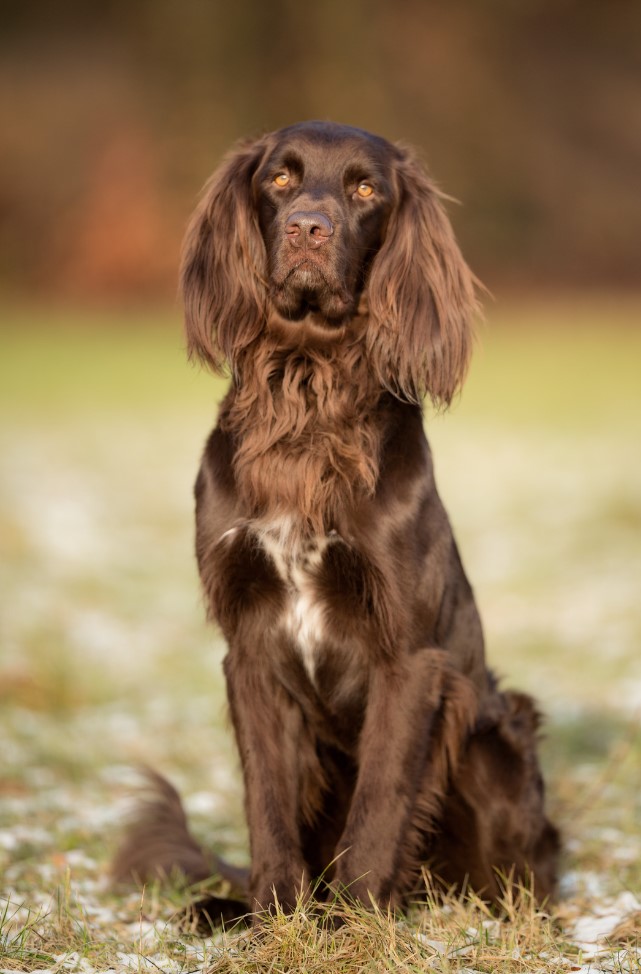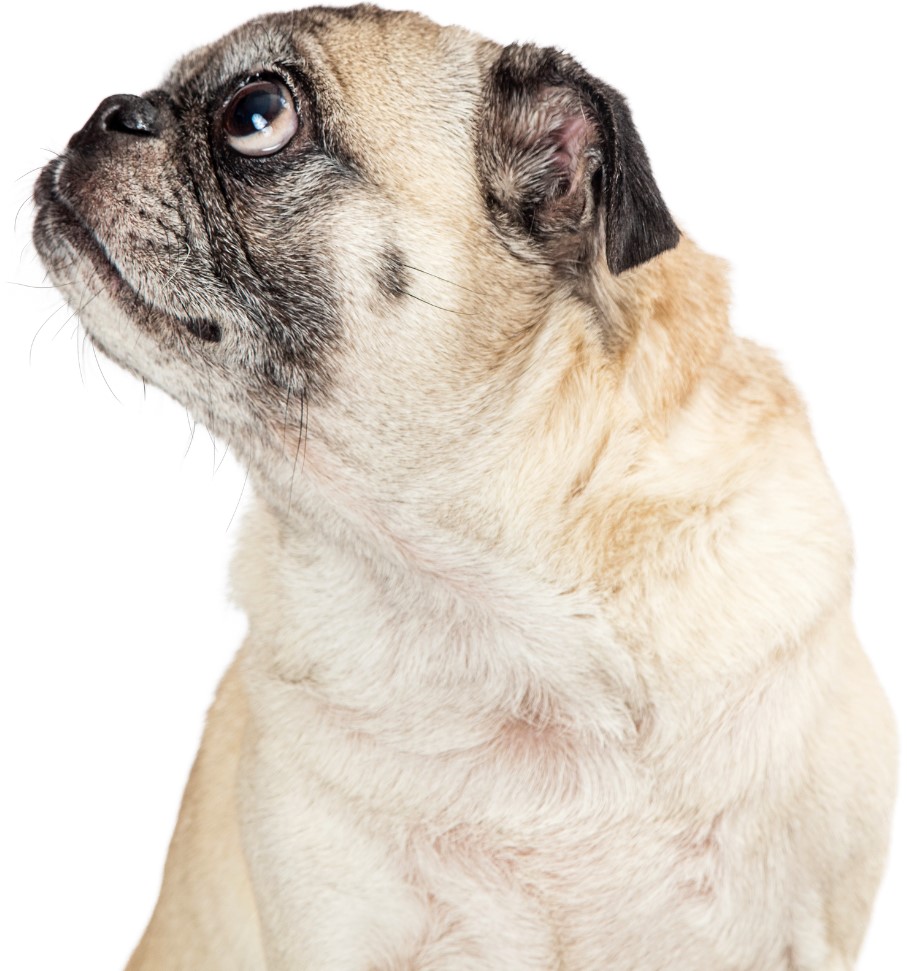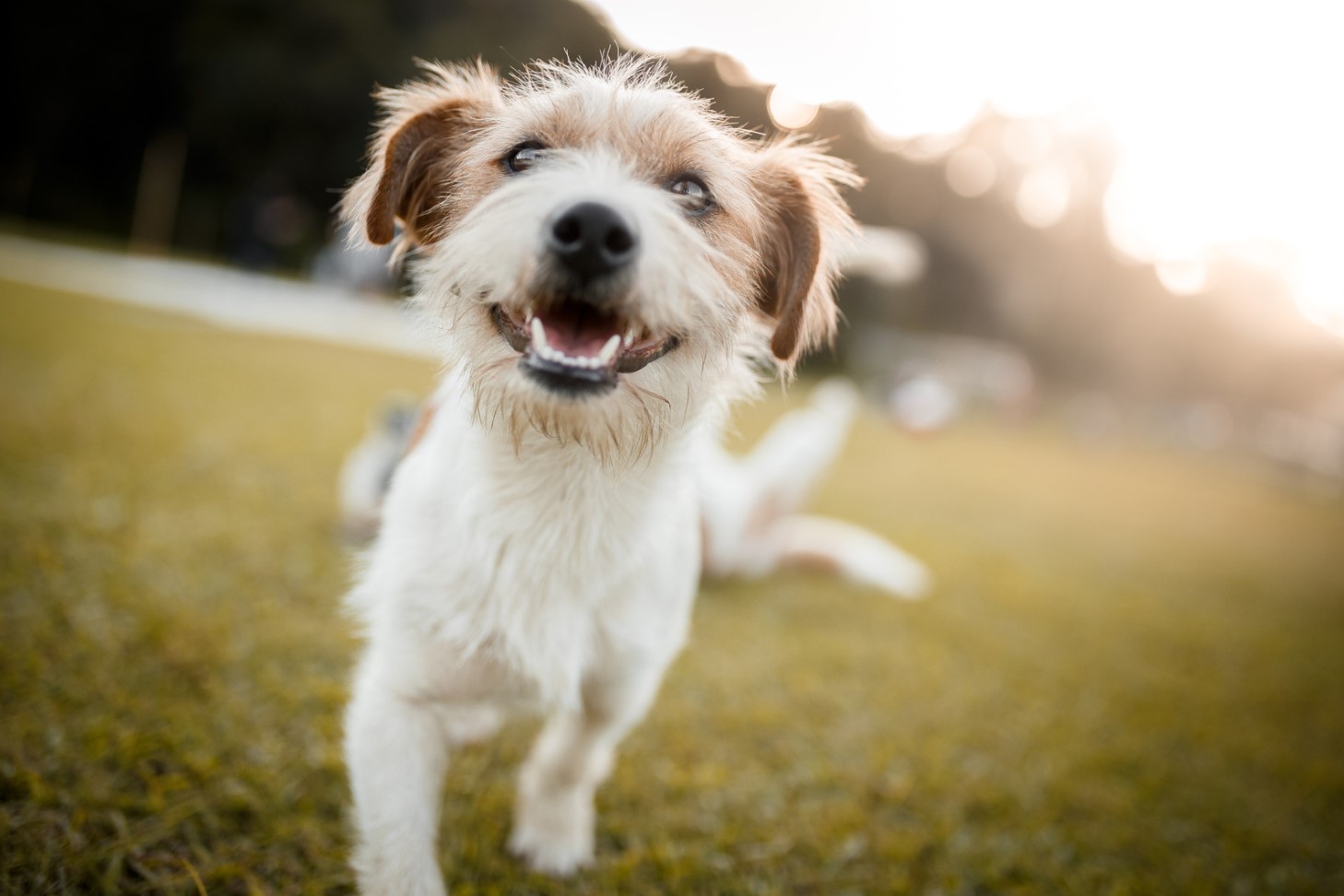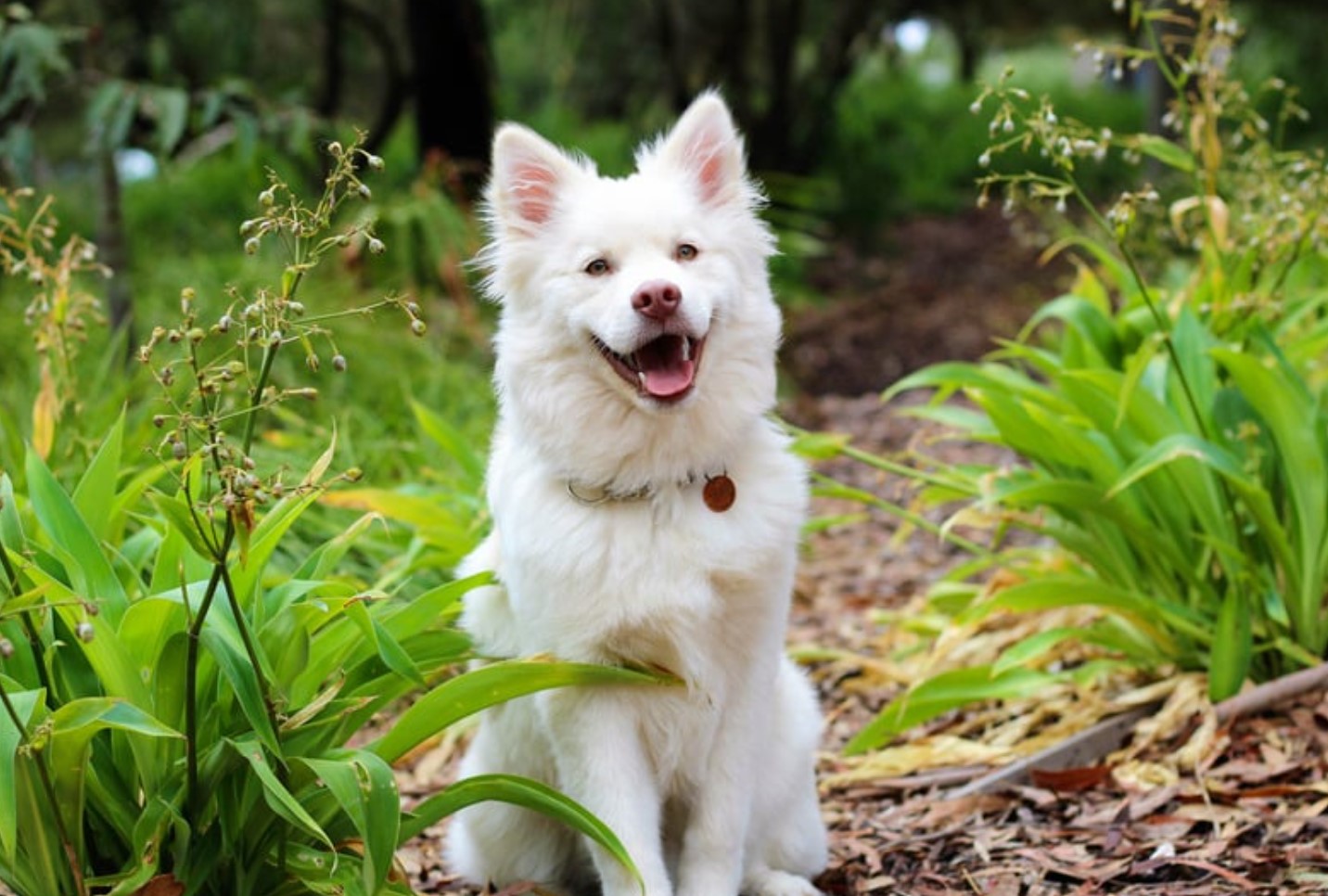Introduction To Dogs As Domesticated Animals
Dogs have been considered man’s best friend for centuries. They are friendly, loyal and protective, which makes them great companions. In this blog post, we will be discussing dogs as domesticated animals. Domestication is a process where animals are tamed and adapted to a human environment, and this process has been going on for thousands of years.
One of the earliest forms of domestication is the wolf, which is believed to be the ancestor of all modern dogs. Wolves were initially attracted to human settlements because of the abundance of food, and over time, they became more accustomed to human presence. This led to a mutualistic relationship where wolves provided security and hunting assistance, while humans provided food and shelter.
Dogs have been selectively bred over the years to emphasize certain traits, such as loyalty, obedience, and intelligence. This has resulted in a wide variety of dog breeds, ranging from toy breeds like Chihuahuas to working breeds like German Shepherds. Some dogs have also been bred for aesthetic purposes, such as the fluffy Bichon Frise or the elegant Afghan Hound.
- In conclusion, dogs are fascinating domesticated animals with a rich history of evolution and human companionship.
- Their friendly demeanor and versatility make them ideal pets for people of all ages and lifestyles.
- Whether you’re looking for a loyal companion, a hunting partner, or a show dog, there is a breed of dog out there for everyone.
The Different Varieties Of Dogs
Dogs come in all shapes and sizes, and each variety has its own unique characteristics and temperament. Whether you’re looking for a loyal companion, a guard dog, or a playful friend for your children, there’s a breed out there that’s just right for you. Here are some of the most popular dog breeds and what makes each one special:

Golden Retrievers are known for their friendly and playful nature, making them great family pets. They are also highly intelligent and can be easily trained to perform a variety of tasks, such as retrieving objects or assisting people with disabilities. They are loyal and affectionate, and make excellent companions for children and adults alike.
- Poodles are renowned for their elegant appearance and impressive intelligence. They come in three sizes – standard, miniature, and toy – and can be curly, wavy, or straight-haired. Poodles are versatile dogs, excelling in many areas such as agility, obedience, and hunting. They are also hypoallergenic, making them a great choice for people with allergies.
- Bulldogs are a popular choice for people who want a loyal and affectionate dog that’s also low maintenance. They have a distinctive wrinkled face and a stocky build, and are known for their calm demeanor. Bulldogs are good with children and make excellent apartment companions.
- Labrador Retrievers are a beloved breed that have been popular for many years. They are friendly, outgoing, and energetic, and make great companions for people who lead an active lifestyle. Labs are known for their love of water and are excellent swimmers. They are also highly trainable and make for great service dogs.
- German Shepherds are a highly intelligent and loyal breed that has been used for various purposes such as police work and search and rescue. They are also great family pets, being very protective of their owners. German Shepherds require a lot of exercise and stimulation due to their high energy levels.
| Breed | Temperament | Activity Level |
|---|---|---|
| Poodle | Intelligent, Elegant, Versatile | Medium |
| Bulldog | Calma, Loyal, Affectionate | Low |
| Labrador Retriever | Energetic, Friendly, Trainable | High |
| German Shepherd | Loyal, Intelligent, Protective | High |
Of course, this is just a small sample of the many different varieties of dogs out there. Each breed has its own unique traits and personality, so be sure to research thoroughly before bringing a furry friend into your home. Dogs can bring a lot of joy and love into our lives, but it’s important to choose one that’s a good fit for your lifestyle and personality.

Brief History Of Dog Domestication
The relationship between humans and dogs goes back thousands of years. Dog domestication is believed to have occurred around 15,000 years ago, when wolves were first domesticated by humans. The exact reason behind why humans chose to domesticate wolves is still debated among scientists. One theory is that humans were attracted to their hunting instincts, while another theory suggests that wolves may have been domesticated for their ability to offer protection.
Over time, these domesticated wolves began to evolve into the domesticated dogs we know and love today. Through selective breeding, humans were able to create different breeds with unique physical and behavioral traits. Dogs were also used for a variety of tasks such as hunting, herding, guarding, and even as companions.
- It is interesting to note that not all cultures have viewed dogs in the same way.
- While dogs have been considered man’s best friend in Western cultures, in some Eastern cultures they are viewed more as a working animal than a companion.
- Despite these cultural differences, dogs remain one of the most beloved domesticated animals in the world.
| Breed | Origin | Function |
|---|---|---|
| Golden Retriever | Scotland | Hunting |
| German Shepherd | Germany | Guarding |
| Chihuahua | Mexico | Companion |
Today, dogs continue to play a significant role in our lives. According to the American Veterinary Medical Association, approximately 38% of U.S. households own at least one dog. Dogs perform a wide range of tasks, from serving as law enforcement animals to providing emotional support as therapy dogs.
There is no denying that dogs hold a special place in our hearts. Whether you are a dog owner or simply a dog lover, the bond between humans and dogs is both fascinating and heartwarming.

The Evolution Of Canine Breeds
The dog is known as man’s best friend, and for good reason – they are loyal companions that have been around for thousands of years. Throughout history, dogs have been bred for different purposes, such as hunting, herding, and protection. Over time, people have created new breeds and refined existing ones to better suit their needs. Let’s take a closer look at the evolution of canine breeds.
Domestication of dogs: It’s believed that dogs were originally domesticated from wolves around 15,000 years ago. Early humans realized that wolves could be trained to help with hunting and protection, which eventually led to the creation of a new breed – the dog. These early dogs were likely bred for specific tasks, such as hunting or guarding.
- Development of purebred dogs: As dogs became more valuable to humans, people began to breed them for certain traits. This led to the development of purebred dogs, which are bred to maintain specific physical and behavioral characteristics. For example, the Labrador Retriever was bred for its ability to retrieve game, while the German Shepherd was bred for its intelligence and protective instincts.
- New breeds: In addition to refining existing breeds, people have also created new breeds over the years. These new breeds are often a combination of existing breeds, and are designed to fill a specific need. For example, the Cockapoo is a cross between a Cocker Spaniel and a Poodle, and was created to be a hypoallergenic family pet.
Mixed breeds: While purebred dogs may be popular, many people also love mixed breed dogs. These dogs are often a combination of two or more breeds, and can have a unique appearance and temperament. In recent years, there has been a rise in popularity of designer dogs, which are intentionally bred mixes, such as the Goldendoodle (Golden Retriever/Poodle mix).
| Breed | Description |
|---|---|
| Labrador Retriever | A friendly and energetic breed that excels in retrieving game. |
| German Shepherd | An intelligent and loyal breed that is often used in law enforcement and military roles. |
| Cockapoo | A hypoallergenic and affectionate mixed breed that is popular as a family pet. |
| Goldendoodle | A mix of a Golden Retriever and a Poodle, known for being low-shedding and friendly. |
Today, there are hundreds of different breeds of dogs, each with its own unique traits and characteristics. Whether you prefer a purebred or a mixed breed, there is sure to be a dog out there that will make a great companion.
The Role Of Dogs İn Ancient Societies
Dogs have been loyal companions to humans for thousands of years. In ancient societies, dogs played a significant role in various aspects of daily life. They were not only pets, but also served as working animals, guards, hunters, and even religious symbols. The history of dogs in ancient societies is fascinating, and shows just how important they were to human culture.
One of the most common roles of dogs in ancient societies was as hunting companions. Dogs were trained to help humans track, chase, and capture prey. In fact, some of the earliest known depictions of dogs show them hunting alongside humans. In addition to hunting, dogs were also used as guards to protect homes and livestock. They were fierce protectors, and could be trained to attack intruders or even other animals.
- Another important role that dogs played in ancient societies was as working animals, specifically in transportation. Dogs were used to pull sleds, carts, and other types of vehicles. This was especially prevalent in colder climates, where dogs were specifically bred to handle the harsh conditions.
- Addition to their practical purposes, dogs also held a religious significance in some ancient societies. In ancient Egypt, for example, dogs were thought to be sacred animals with a special connection to the gods. They were even mummified with their owners to accompany them in the afterlife.
Overall, the role of dogs in ancient societies was multi-faceted and culturally rich. They served as working animals, hunting companions, guards, and even religious symbols. Dogs have always held a special place in human society, and their importance in ancient times is a testament to their enduring loyalty and companionship.
| Dog Breeds Used in Ancient Times: |
|---|
| Saluki (Egypt) |
| Greyhound (Egypt) |
| Pharaoh Hound (Egypt) |
| Mastiff (Babylon) |
| Siberian Husky (Russia) |

The Origins Of The Domesticated Dog
The Origins Of The Domesticated Dog:
The domesticated dog is believed to be one of the oldest domesticated animals. The origins of the domesticated dog can be seen as far back as 30,000 years ago. However, different breeds of dogs have different origins. It is said that dogs are descended from wolves, which were domesticated by early human civilizations for hunting and protection.
- The first domesticated dogs were used for hunting purposes only. They were trained to track, hold, and retrieve game for their human companions.
- As human civilization evolved, the role of the domesticated dog expanded to include guarding and herding tasks.
One of the most popular breeds of dogs is the Labrador Retriever. Labrador Retrievers originated from Canada and were used for hunting purposes. They are known for their friendly temperament and make great family pets.
| Breed | Origin | Usage |
|---|---|---|
| Labrador Retriever | Canada | Hunting, family pet |
| German Shepherd | Germany | Herding, police dog |
| Bulldog | England | Fighting, guarding |
Today, dogs are kept as pets, for companionship, and therapy. The history of domesticated dogs is long and varied, and there is much to learn about the evolution of the dog as a domesticated animal. Regardless of their origins, dogs continue to hold a special place in the hearts of people all over the world.
Breeding Programs And Purebred Dogs
Breeding Programs And Purebred Dogs
For many individuals, owning a dog is a fulfilling and rewarding experience. In recent years, the demand for purebred dogs has risen significantly. This has led to the growth of breeding programs across the world. These programs aim to produce healthy, well-tempered and visually pleasing dogs to meet the increasing demand for certain breeds of dogs.
- These programs may have benefits such as:
- Reducing the risk of health issues in a breed over time
- Ensuring the selective breeding of only the best and healthiest dogs, which can help to produce litters of puppies with strong physical traits, such as a long lifespan, good immune system, or certain behavioral traits
However, while there are numerous advantages of breeding programs, there are also pitfalls to be careful of. One of the major risks involved in breeding programs is inbreeding. Inbreeding refers to the mating of two closely related dogs within a breed. This is done in order to produce a litter of puppies with the same, desirable traits as their parents. Unfortunately, this process can also result in unhealthy puppies with genetic disorders, reduced fertility, and lower immune systems.
| Pros | Cons |
|---|---|
| Helps to maintain the breed traits | Inbreeding can cause genetic disorders |
| Can control breed population | Overbreeding can increase the population and cause issues |
| Produces a litter of pups with predictable characteristics | High risk of health issues |
It is worth noting that breeding programs are not the only way to secure a purebred dog. Adoption or rescue services may also be considered, providing the opportunity for caring individuals to give a loving home to a dog in need. While breeding programs are important to maintain the breed traits of purebred dogs, it is important to be aware of the potential health risks associated with inbreeding and overbreeding. Responsible breeding programs should prioritize the welfare of their dogs above all else.

Understanding Dog Breeds And Temperaments
Dogs are amazing creatures that bring so much joy to our lives. There are hundreds of different dog breeds across the world, each with their own unique characteristics and temperaments. Understanding these differences can be key to choosing a dog that fits perfectly into your lifestyle and family.
Breed is an important factor when it comes to selecting a dog. Some breeds are better suited to families with young children, while others require lots of exercise and stimulation. The size of a dog is also important to consider, as certain breeds are more suitable for smaller living spaces. Breeds such as the Golden Retriever and Labrador Retriever are popular family pets due to their friendly and loyal temperaments, while smaller breeds such as the Chihuahua and Pomeranian are perfect for apartment living.
- Temperament is another important aspect to consider when selecting a dog breed. Some breeds are naturally more aggressive, while others are more laid back and relaxed. It is important to research the temperament of the breed you are considering and see if it is a good match for your personality and lifestyle. Some breeds, such as the German Shepherd and Rottweiler, are known for their protective instincts and need for rigorous training, while others, such as the Basset Hound and Shih Tzu, are more docile and relaxed.
| Breed | Temperament |
|---|---|
| Bulldog | Sweet, gentle, and lazy |
| Poodle | Clever, active, and proud |
| Border Collie | Smart, energetic, and athletic |
In conclusion, understanding dog breeds and temperaments is important when selecting a dog that suits your lifestyle and family. Different breeds have different needs, so it is important to research and understand the breed you are considering. By doing so, you can ensure that your new furry family member will bring joy and happiness to your life for years to come.
The Benefits Of Owning A Dog
Dogs make great companions and they offer much more than mere companionship. There are many benefits to owning a dog, not only for your mental health but also your physical health.
First of all, owning a dog can increase your daily physical activity. Taking your dog for daily walks can help you meet your daily exercise quota and keep you active. Studies have shown that owning a dog can also help lower your blood pressure and reduce stress. Dogs can provide an emotional support system, which can have positive effects on your overall mental health and wellbeing. It’s no wonder that dogs are often used in therapy and rehabilitation settings.
Secondly, dogs can also help improve your social life. Taking your dog for a walk can be a great way to meet new people and make new friends. Dogs can also help break down social barriers and make it easier to start a conversation with others. Additionally, dogs can be a great icebreaker when meeting new people, they often create a common bond and point of interest for people to talk about.
- Thirdly, owning a dog can help reduce feelings of loneliness.
- Fourthly, dogs can help keep you safe.
| Benefits of owning a dog | Description |
|---|---|
| Increased physical activity | Taking your dog for walks can help keep you active and meet exercise goals. |
| Improved mental health and wellbeing | Dogs can provide an emotional support system and lower blood pressure and reduce stress. |
| Better social life | Taking your dog for walks can help you meet new people and form friendships. |
| Reduced feelings of loneliness | Dogs can be great companions and help alleviate feelings of isolation and loneliness. |
| Increased safety | Dogs can help deter intruders and protect you and your property. |
The benefits of owning a dog are numerous and can have a significant positive impact on your life. However, it’s important to remember that owning a dog also comes with responsibility. Feeding, grooming, and caring for a dog requires time, effort, and money. It’s important to make sure that you have the resources to provide a good home for a dog before deciding to bring one into your life.
Training Techniques For Different Breeds
Dogs are loyal companions and keeping them healthy and happy is important to every owner. One way to keep them healthy is by training them. However, different breeds have different personalities and different training techniques work for different breeds.
Labrador Retrievers are one of the most popular breeds and are intelligent, friendly and energetic. They respond well to positive reinforcement. Using treats or praise when doing something right is effective for them. Consistency is key when training a retriever.
- Bulldogs have a stubborn streak which makes them more difficult to train. They need extra patience and treats as incentives.
- German Shepherds are working dogs and are highly intelligent. They require challenging activities or tasks to stimulate their minds.
Chihuahuas are small but mighty. They need special attention since they can become bored easily. Consistent short sessions are necessary until they become more comfortable with training. Implementing tricks such as hide and seek and letting them chase objects can be helpful during training.
| Breed | Training Technique |
|---|---|
| Labrador Retriever | Positive Reinforcement |
| Bulldog | Patience and Treats |
| German Shepherd | Challenging Activities |
| Chihuahua | Short Consistent Sessions |
Training a dog takes time and effort. While basic obedience training can be done by any breed, it is important to keep in mind their unique personalities when implementing more advanced training tasks. Remember, patience, consistency and positive reinforcement are key to a well-trained dog.
The Science Behind Dog Behaviors
Dogs have always been considered man’s best friend. Their loyalty and devotion to their owners are unmatched by any other animal. But, have you ever wondered why your furry friend behaves the way it does?
Well, the truth is that there is a lot of science behind dog behaviors. From wagging their tails to jumping up on people, there are reasons behind every action they take. Understanding these behaviors can help you improve your relationship with your pet and ensure that they are happy and healthy.
One of the most common behaviors observed in dogs is tail wagging. But, did you know that the direction of the wag can convey different emotions? A tail wagging to the right indicates that the dog is happy or excited, while a wag to the left suggests the dog is anxious or aggressive.
- Another important behavior to understand is jumping up on people.
- This behavior is often seen as a sign of affection.
- However, it can also be a sign of dominance or a way for the dog to get attention.
- To prevent this behavior, it is important to teach your dog alternative methods of greeting people.
| Behavior | Possible Cause |
|---|---|
| Barking |
|
| Chewing |
|
| Digging |
|
These are just a few examples of the fascinating science behind dog behaviors. By understanding your dog’s actions, you can better communicate with them and ensure that they are happy and healthy.
Cultural Representations Of Dogs İn Literature And Arts
Dogs are a ubiquitous part of human society and culture, and they have been represented in various ways throughout history. From ancient civilizations to modern times, dogs have played important roles in literature and arts, representing different ideas and themes. Some of the common cultural representations of dogs are:
- Loyalty: Dogs are known for their loyalty towards their owners, and this quality has been emphasized in many literary works and artworks. For example, in the novel “The Call of the Wild” by Jack London, the dog Buck is portrayed as a loyal companion to his owner, even in the face of extreme adversity.
- Companionship: Dogs are often seen as great companions, and they have been the subject of many artworks that depict their friendly and playful nature. For example, the painting “A Friend in Need” by Cassius Marcellus Coolidge shows a group of dogs playing cards together, emphasizing their social nature.
- Protection: Dogs are also known for their protective instincts, and they have been used in many literary works and artworks to symbolize protection and strength. For example, the Greek myth of Cerberus depicts a three-headed dog that guards the underworld, emphasizing the importance of protection.
Overall, dogs have been represented in various ways in literature and arts, reflecting the different cultural attitudes towards these animals. Whether they are seen as loyal companions or fierce protectors, one thing is clear: dogs have played an important role in shaping our cultural imagination and understanding of the world around us.
Common Misconceptions About Dogs
Dogs are one of the most beloved household pets all around the world. As man’s best friend, they are not only loyal but also adorable. However, there are still common misconceptions about these creatures that should be demystified.
First and foremost, one of the most prominent misconceptions is that dogs age just like humans. However, the fact is that dogs age much faster than us humans – 7 years faster to be precise! Therefore, it is crucial to take care of dogs accordingly and ensure they live long and healthy lives.
- Second, another misconception people have is that all dogs are the same. While they do belong to the same species, there are over 300 breeds of dogs worldwide. Each of these breeds has different physical attributes, and their temperaments and personalities also vary.
Third, people are led to believe that it is okay for dogs to eat table scraps. This is utterly untrue as some human food could be poisonous to canines. Therefore, it is crucial to provide dogs with dog food specifically tailored to meet their nutritional needs.
| Myth | Fact |
|---|---|
| Dogs are colorblind. | While they can’t see every color, dogs can see shades of blue and yellow. |
| A wagging tail means the dog is happy. | A wagging tail could mean either happiness or anxiety, depending on the placement and speed of the wag. |
| Dogs require a bath once a year. | How often a dog requires a bath depends on the breed and their activities. Some breeds require more frequent baths, whereas others require less. |
In summary, there are certainly a few misconceptions about dogs. It is important to ensure that one does not fall prey to those. Dogs are incredible creatures, and the more we learn about them, the more we’ll be able to provide them with the love and care they need.
The Future Of Dog Breeding And Ownership
Dog Breeding and Ownership: How It Will Change In The Future
If you’re a dog enthusiast, then you know that breeding and owning them can be a great source of joy. However, the world is changing, and so is the industry of dog breeding and ownership. As man’s best friend, dogs have been bred to cater to human needs, but are we breeding them for the better or for worse? In this blog post, we will examine how dog breeding and ownership will change in the future and how it will impact us as dog owners.
Breeding
- With technological advancements in breeding, genetic modification will become more prevalent, making it easier to create designer dogs that are hypoallergenic, smarter, and healthier. The downside to this is that it may lead to animal cruelty when breeders prioritize their profits over the welfare of the animals.
- We may also see a reduction in breeding for cosmetic traits such as altering ears and tails, which can cause harm to the dogs. Instead, breeders are focusing on health and behavioral traits that will improve the dog’s quality of life.
Ownership
- Recent studies have shown that more people are opting to adopt rather than buy pets from breeders. This trend is expected to continue, and breeders will have to adapt to the changing market.
- As society becomes more aware of animal rights and welfare issues, there may be stricter regulations on breeding and owning pets. This means that breeders will face more scrutiny in their operations, and owners will have more responsibilities when it comes to their pets.
| Pro | Con |
|---|---|
| Designer breeds will become healthier, smarter, and more hypoallergenic. | It may lead to animal cruelty as breeders prioritize profits over the welfare of animals. |
| Breeders are focusing more on behavioral and health traits rather than cosmetic traits. | There may be a reduction in the availability of traditional breeds due to less demand. |
| More people are choosing to adopt pets, which can help reduce overpopulation in shelters. | Breeders may have to adapt to the changing market or risk going out of business. |
| The emphasis on animal welfare may lead to stricter regulations on breeding and pet ownership. | Owners will have more responsibilities when it comes to their pets, which may put a strain on their time and finances. |
In conclusion
The future of dog breeding and ownership will change, and it’s up to us to shape it in a positive way. With technological advancements and shifting perspectives on animal welfare, the breeding industry will have to adapt to the changing times. As responsible pet owners, we must also do our part and ensure that our pets are well taken care of and loved unconditionally.
Responsible Dog Ownership Guidelines To Follow.
As a pet owner, owning a dog comes with certain responsibilities that you should follow to ensure you take care of your dog and help to make them feel like a valued member of your family. Responsible dog ownership is a commitment that requires attention, care, time, and sometimes sacrifices. Below are some guidelines to follow if you want to be a responsible dog owner.
Provide Proper Nutrition and Hydration: Dogs, like humans, require a balanced diet to ensure they stay healthy. You should ensure that your dog is fed a well-balanced diet to provide them with the nutrients they need. Also, ensure that your dog has access to clean water that is changed regularly to keep them hydrated.
Socialization and Training: It’s important to socialize and train your dog from an early age. Socializing your dog can help them develop a healthy personality, and it enables them to relate well to other animals and people. Training can help teach your dog good behavior and prevent any harm to them and other people or animals.
Provide Adequate Shelter: Adequate shelter for your dog means providing a safe, comfortable, and reliable place for your dog to rest, sleep, and eat. You should ensure that your dog’s shelter is clean, dry, and secure. Additionally, your dog’s shelter should be environment-friendly, and it should provide enough room for your dog to move around, stretch, and play.
Regular Veterinary Check-ups: It’s essential to take your dog for regular check-ups to ensure that they are healthy and free from diseases. Additionally, you should keep up with your dog’s vaccination records to prevent them from contracting any disease. Regular vet visits can also help in identifying any underlying health conditions which can be treated in time before they cause more harm to your dog.
Main Takeaway: Owning a dog can be both rewarding and challenging. The guidelines discussed above will go a long way in ensuring that you raise a happy and healthy dog. By following these guidelines, you can improve the quality of life for your dog, while at the same time giving you peace of mind as a responsible dog owner. It’s also important to remember that as a dog owner, it’s your responsibility to provide love, care, and attention to your dog throughout their life.